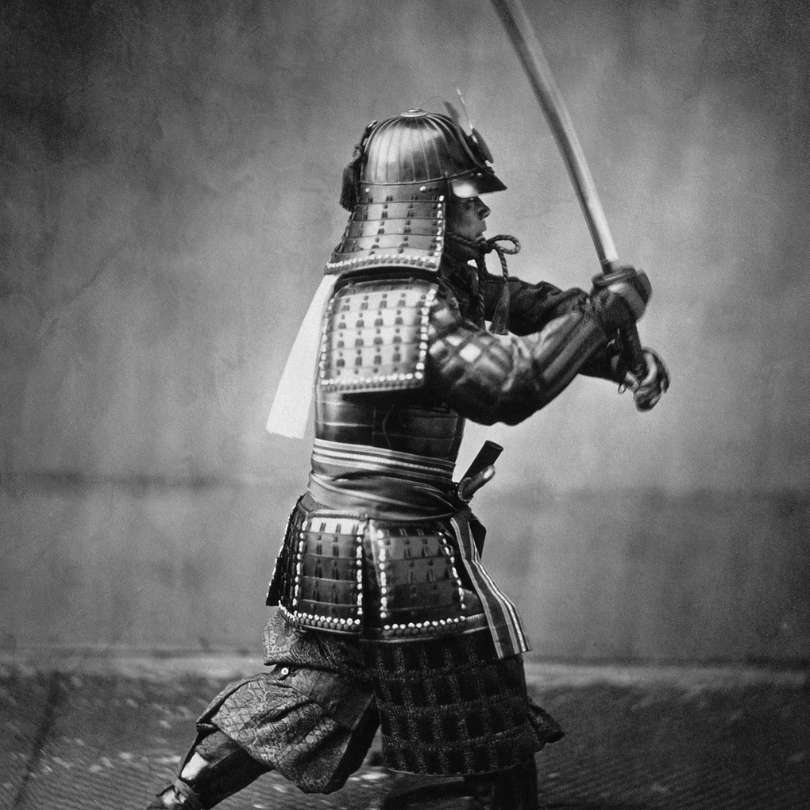
When we think of Japan’s past, the image that often comes to mind is the samurai: armored warriors wielding sharp katanas, bound by honor and loyalty. But the story of the samurai is also the story of Japan itself — a journey of tradition, conflict, resilience, and transformation.
This article explores who the samurai were, how they rose to power, their code of honor, and their lasting influence, while also giving a complete view of Japan’s broader history. By the end, you’ll understand why the samurai are not just warriors of the past, but enduring symbols of discipline and cultural identity.
The Rise of the Samurai Class ⚔️
The Kamakura Shogunate (1185–1333)
- After the Genpei War between the Minamoto and Taira clans, the Minamoto clan triumphed.
- Minamoto no Yoritomo became Japan’s first shogun (military ruler).
- This established the shogunate system, where the emperor was symbolic, but the shogun held real power.
From here, the samurai became the backbone of Japanese government and society for centuries.
The Mongol Invasions 🌊
In 1274 and 1281, the Mongol Empire tried to invade Japan. The samurai fought fiercely, and typhoons — later called kamikaze or “divine winds” — destroyed much of the Mongol fleets. This defense boosted the samurai’s reputation as protectors of Japan.
Bushido: The Samurai Code of Honor 📜
The samurai followed Bushido, or “the way of the warrior.”
Core values included:
- Loyalty to one’s lord above all else.
- Courage in battle, even in the face of death.
- Discipline and self-control in daily life.
- Honor, which sometimes meant committing seppuku (ritual suicide) rather than facing shame.
Bushido wasn’t just about fighting; it was also about morality, duty, and respect. These values shaped Japanese society long after the samurai disappeared.
The Ashikaga and the Warring States Era 🏯
During the Muromachi period (1336–1573), the Ashikaga shogunate ruled, but its control weakened. This led to the Onin War (1467–1477) and the era of constant civil war known as the Sengoku period.
- Powerful regional lords (daimyo) fought for dominance.
- Samurai served these daimyo, often switching loyalties as power shifted.
- This was also the time when European traders and missionaries arrived, introducing guns and Christianity.
The Great Unifiers of Japan 🗡️
Out of the chaos of the Sengoku period rose three legendary leaders:
- Oda Nobunaga – A brilliant but ruthless daimyo who introduced firearms into Japanese warfare and began unifying the country.
- Toyotomi Hideyoshi – Consolidated Nobunaga’s gains, completed much of the unification, and even launched invasions of Korea.
- Tokugawa Ieyasu – Finally established lasting peace after winning the Battle of Sekigahara (1600), founding the Tokugawa shogunate.
Samurai in the Edo Period (1603–1868) 🌸
The Edo period, also known as the Tokugawa era, was marked by peace and order.
- With no major wars, many samurai transitioned from warriors to bureaucrats, scholars, and administrators.
- Their swords became more a symbol of status than tools of war.
- Despite their elevated rank, many samurai lived modestly, as stipends often did not cover expenses.
This era also saw the rise of Japanese arts: kabuki theater, haiku poetry, and ukiyo-e prints flourished alongside samurai culture.
The Decline of the Samurai 🚨
The arrival of Commodore Matthew Perry in 1853, with powerful American warships, exposed Japan’s vulnerability. The Tokugawa shogunate struggled to handle foreign pressure, leading to its collapse.
- In 1868, the Meiji Restoration restored power to the emperor and abolished the shogunate.
- The samurai class was officially dissolved. They lost privileges such as carrying swords in public.
- Many adapted, becoming businessmen, military officers, or educators.
But the spirit of Bushido lived on, influencing Japan’s modernization and military ethos.
Samurai Legacy in Modern Japan 🇯🇵
Though the samurai as a class disappeared in the 19th century, their influence remains strong:
- Cultural icons – Samurai armor, swords, and castles are treasured in Japanese museums and festivals.
- Martial arts – Disciplines such as kendo, judo, and aikido are rooted in samurai training.
- Bushido values – Honor, discipline, and loyalty continue to shape Japanese society and corporate culture.
- Global fascination – From movies like The Last Samurai to anime and video games, the samurai remain an enduring global symbol.
The Samurai and the Broader History of Japan 📖
To fully understand the samurai, we need to see them within the wider history of Japan:
- Ancient Japan (Jomon and Yayoi periods): Early settlers developed farming and pottery.
- Classical Japan (Nara and Heian): Court culture flourished, but real power shifted to the provinces.
- Medieval Japan (Kamakura to Sengoku): The rise of the samurai class and centuries of war.
- Early Modern Japan (Edo): Peace under the Tokugawa, where samurai became administrators.
- Modern Japan (Meiji to today): The end of samurai but survival of their values in a modernized nation.
The samurai were not an isolated phenomenon — they were central to the fabric of Japanese history.
Conclusion
The samurai were more than warriors with swords — they were guardians of order, cultural innovators, and symbols of loyalty and discipline. Their journey, from provincial fighters to elite rulers and finally to historical legends, mirrors the entire history of Japan itself.
Today, even though samurai no longer walk the streets of Tokyo or Kyoto, their spirit endures in Japanese culture, art, and philosophy. And that is why the samurai remain one of the most admired and enduring symbols of the Land of the Rising Sun. 🌅⚔️
Sources
- Stephen Turnbull, The Samurai: A Military History. Routledge, 2017.
- Karl Friday, Samurai, Warfare and the State in Early Medieval Japan. Routledge, 2004.
- Conrad Totman, A History of Japan. Blackwell Publishing, 2005.
- Andrew Gordon, A Modern History of Japan: From Tokugawa Times to the Present. Oxford University Press, 2020.
- Encyclopedia Britannica – “Samurai.”
- BBC History – “Samurai and Bushido.”

